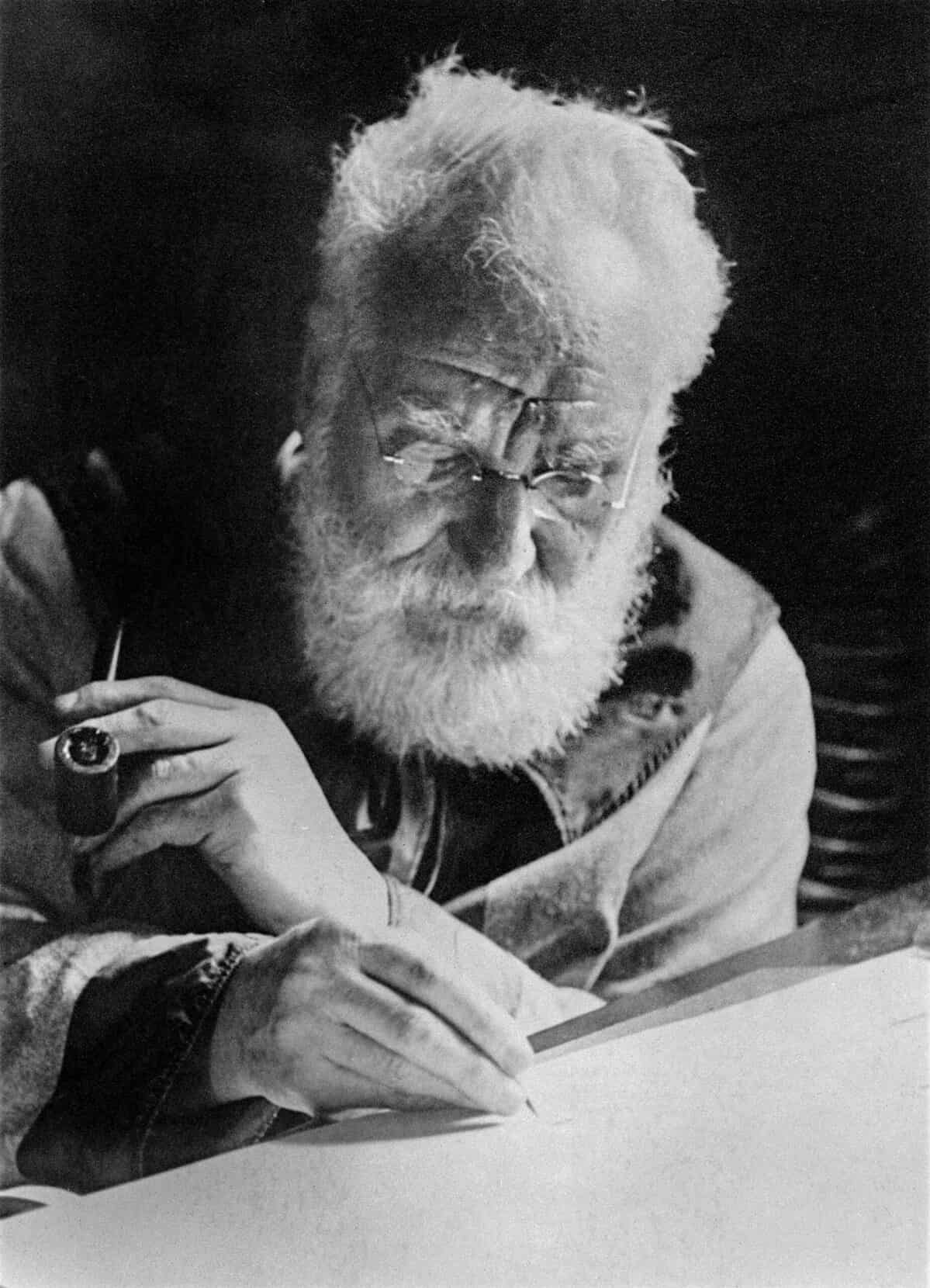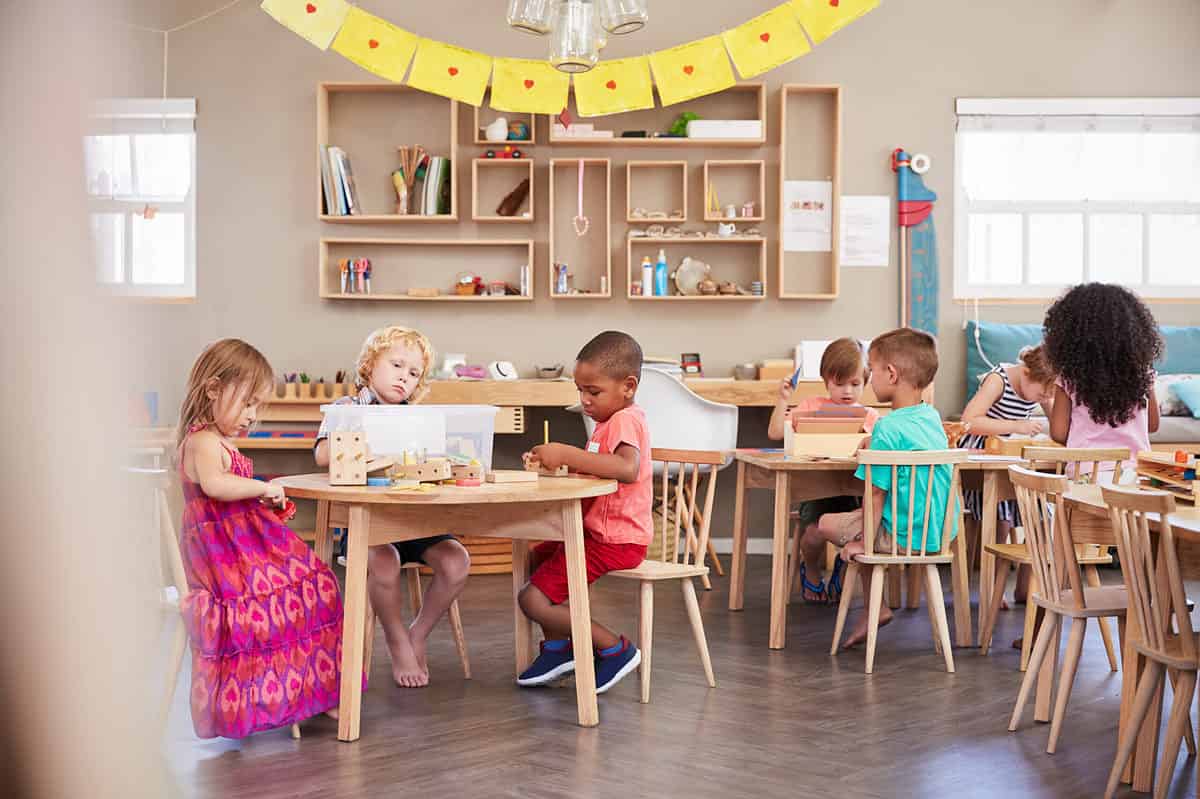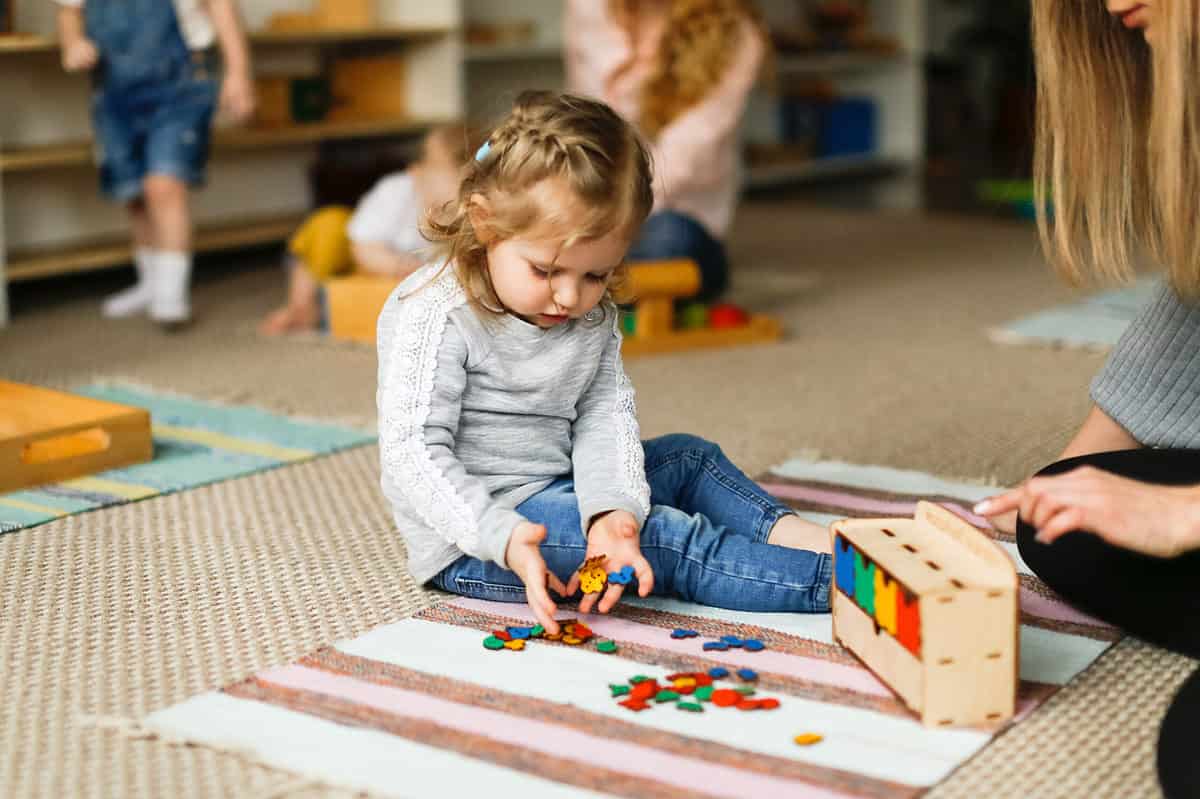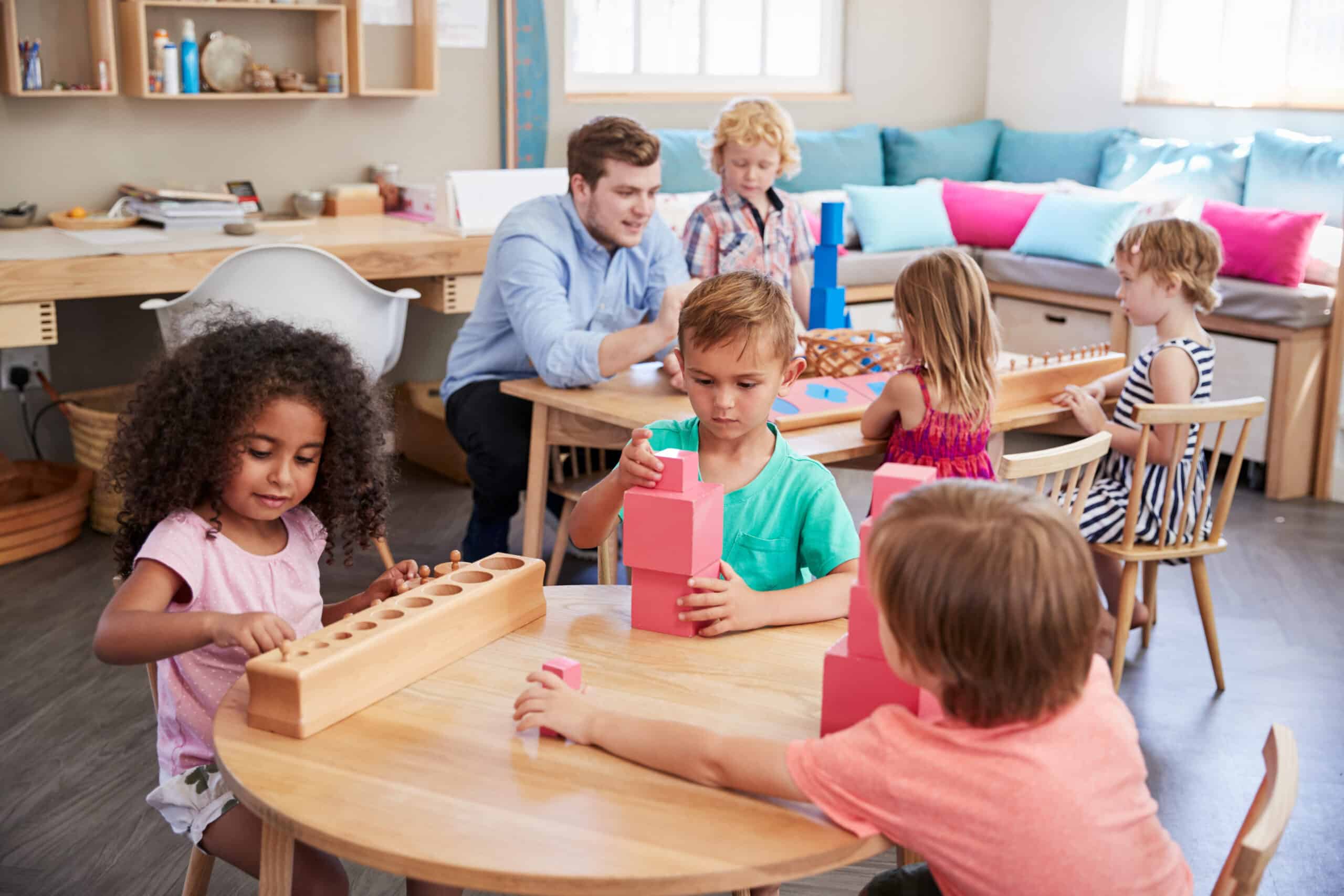What are Montessori schools and what do they teach? Montessori is one of the fastest-growing methods of education worldwide, and with good reason. The self-directed child-centered pedagogy has a proven track record that spans the last 100+ years.
Keep reading to learn more about this compelling model for educating young minds.
Key Points
- Dr. Maria Montessori's research was the gateway for the Montessori method of education.
- The Montessori education method encourages respect for the child and granting the child control over their learning.
- The Montessori method encourages providing students with all the tools they need to educate themselves.
What are Montessori Schools: Roots
The roots of Montessori education grew out of Dr. Maria Montessori's research in the asylums of Rome. Montessori (1870-1952), an Italian physician, was nothing short of amazing. She was the only female in the University of Rome's medical school class of 1896, a time when the majority of women were encouraged to stay at home minding the hearth. A pediatrician and psychiatrist by training, Dr. Montessori developed an interest in special education from her observations of the children in the asylums who had been written off by society.
She saw their potential and endeavored to help. She began by translating the works of two pioneers in special education, Jean Marc Gaspard Itard and Édouard Séguin, from French to Italian, incorporating some of their methods into her final model. The success she experienced with her earliest classes working with some of Rome's most impoverished children led Dr. Montessori to venture into the mainstream. By 1907, she was already gaining a reputation as an educator.

Alexander Graham Bell was an early patron of Montessori education.
©Everett Collection/Shutterstock.com
Her renown grew exponentially to the point that In 1913, a mere six years later, Alexander Graham Bell (yes, that Alexander Graham Bell), and his wife Mabel founded the first Montessori school in Canada and one of the first Montessori schools in The United States. Thomas Edison was also a fan and benefactor. Fast forward to the present in which the founders of Google, Sergey Brin and Larry Page credit their Montessori education for teaching them to think outside the box. Other Montessori graduates include Beyoncé Knowles, Taylor Swift, Jeff Bezos, Bill Gates, and Mark Zuckerberg. A fairly impressive list to say the least.

Beyoncé Knowles is a Montessori graduate.
©Tinseltown/Shutterstock.com
So what exactly is the Montessori method?
What are Montessori Schools: Principles
Maria Montessori developed her pedagogy around five core principles:
- Respect for the whole child
- Acceptance of the child as a sentient being with an absorbent mind
- Awareness of sensitive periods when the child's mind is ready to acquire new skills
- Access to a prepared environment in which the tools of learning are organized and waiting
- The child is a capable teacher, able to educate him/her/themself, a/k/a auto-education
These five principles are the blueprint for Montessori's self-directed, child-centered model of education. Through her initial observations of children coupled with the evidence provided by the accomplishments of her earliest students, Maria Montessori concluded that children are capable of educating themselves. The absorbent, sponge-like qualities of the young mind manifest in its ability to receive information without prejudice or bias.
Montessori recognized that children will naturally gravitate to the subjects and activities that interest them. This is where the prepared environment comes into play. Montessori classrooms are divided into five to eight stations that present various learning opportunities for curious, young minds. The tools of learning are wooden blocks and glass tumblers for the youngest students and laptop computers and subway maps for the older ones.

Montessori classrooms are divided into 5-8 stations that present various learning opportunities for curious, young minds.
©Monkey Business Images/Shutterstock.com
Montessori also perceived sensitive periods in child development in which the child's neural pathways were open to learning new experiences. These periods occur from birth to age six:
Sensitive Periods
| Category: | Age (in years): | Characteristics: |
|---|---|---|
| Movement | birth-1 | Rolling over, pulling up, crawling, walking |
| Small Objects | 1-4 | A fixation on small objects and attention to detail. |
| Order | 2-4 | Consistency and repetition / thrive with routine |
| Grace and Courtesy | 2-4 | Imitation and internalization of manners |
| Senses | 2-6 | Making increasingly refined observations about their environment through their senses. |
| Writing | 3-4 | Fascination with letters and numbers, attempting to reproduce them |
| Reading | 3-5 | Connecting sounds with letters; sounding out words; reading |
| Language | birth-6 | progressing from gibberish to words to phrases to sentences |
| Spatial Cognition | 4-6 | Interest in routes and landmarks; increasingly able to work more complex puzzles |
| Music | 2-6 | Interest in and development of rhythm and melody |
| Mathematics | birth-6 | Addition, subtraction, multiplication, and division in the form of tactile manipulatives and rhythm games. |
Montessori classrooms are designed to address these phases of development as they occur. Observation, modeling, and experiential activities designed to stimulate the child during these sensitive periods are central to Montessori education. So what does a Montessori classroom look like?
What are Montessori Schools: Classrooms
Montessori classrooms can often be filled with the noisy activity of young scholars at work. They look nothing like traditional classrooms with teacher-centric, direct instruction methods and neat rows of desks in which children are expected to sit quietly while the teacher delivers facts and information via a lecture.
There are no lectures and no desks in Montessori classrooms. And Montessori students are never admonished for making a little noise. Movement is also encouraged in this child-centric model. Montessori recognized the underlying message to children in traditional classrooms, stating, “The task of the educator lies in seeing that the child does not confound good with immobility and evil with activity.” It makes you think.
The classrooms are furnished with child-sized tables and chairs, and soft rugs, for lounging on as neural pathways explode into understanding.

Montessori classrooms have soft rugs for lounging on as neural pathways explode into understanding.
©Natalia Lebedinskaia/Shutterstock.com
Classrooms accommodate three-year spans: birth-3 years, 3-6 years, 6-9 years, and 9-12 years. Montessori education relies on the mixed-age classroom for the opportunities they afford younger students to learn through observing and modeling their older classmates. Children are as adept at teaching other children as they are at teaching themselves.
Curriculum
Curriculum, integral to traditional education models, is absent from the Montessori classroom. The children captain their own ships, creating their own personalized course of study. Montessori education addresses the needs of all sorts of children, accommodating different learning styles. Standardized curricula too often rely on rote memorization skills. Memorization of facts is not the same as understanding.
Montessori classrooms provide the space and time for students to fully grasp concepts and ideas, incorporating their experiences into knowledge. Though some students will undoubtedly create their own, there are no textbooks in Montessori classrooms. And because Montessori classrooms have no set curriculum, they consequently have no tests or grades.
Tests and Grades
Because there is no standardized curriculum in Montessori's method, there are also no standardized tests or their associated grades. There aren't tests of any description, thanks to Montessori being keenly aware of the lasting damage that performing poorly on tests has on children. She was witness to the toll that repeated failures had on children's self-esteem and sense of well-being. She also saw that performing well on tests did not inform a student's abilities or ambition moving forward.

Montessori was keenly aware of the lasting damage that performing poorly on tests has on children.
©Antonio Guillem/Shutterstock.com
Instead of tests and grades, Montessori students' abilities are measured through teacher observation. These observations are shared with parents via written narratives or in conversations, both casual, and in more structured conference formats. Such reporting often allows for a more intimate portrait of the student than a mere letter grade.
Teacher Role
With no curriculum and no testing, what exactly is a Montessori teacher spending her day doing? A lot. Montessori envisioned a bustling classroom with up to 38 students (or more!) milling about in the ongoing process of learning. Teachers do not teach in the strictest definition of the word, however, directing a classroom of 25-38 students, each captaining their own ship, requires patience, dedication, and the skills of an air-traffic controller, or a plate spinner.

Montessori teachers require patience, dedication, and the skills of an air-traffic controller.
©Robinotof/Shutterstock.com
The adults in a Montessori classroom act as guides and directors rather than lecturers or authorities. They observe their students, discerning when they are moving toward sensitive periods, and prepare the classroom accordingly. They will also intervene when cooperative learning devolves into the vortex of hijinks and shenanigans that are unavoidable from time to time in a roomful of unbridled children. But even such uncontrolled chaos offers opportunities for learning.
Without a set curriculum, testing, or grades, what exactly does Montessori teach? Perhaps that question is best answered by former Montessori students. According to Montessori alumni, Montessori education armed them with critical thinking skills, self-reliance, problem-solving abilities, and self-discipline. It taught them to meet the world on their own terms, approaching situations in their own unique way without concern for what others will think.
In this cookie-cutter world, with its penchant for uniformity, what better panacea could there be?
Montessori Schools in the News
On April 10, 2023, Psychology Today published a report discussing various research studies that have been conducted on the Montessori method. Older studies have been criticized for using poor research methods, but recent studies have aimed to improve upon this.
A 2021 study found that the Montessori method left students with greater ability in reading, but equal ability in other academic areas compared to students who attended traditional school. It is important to note, however, that the teachers included in this study lacked formal Montessori education. Further research is needed on Montessori schools, but the research that has been conducted so far suggests that a Montessori education can give students certain advantages.
On March 7, 2023, the University of Kansas's news publication reported that Angela Murray, Director of University of Kansas Achievement & Assessment Institute’s Center for Montessori Research, is working on a first-of-its-kind Montessori handbook. The publication, titled Bloomsbury Handbook of Montessori Education, covers Montessori's educational model from its origins through contemporary times. The handbook is considered a landmark publication in Montessori education, and will be a critical resource for educators in the field. It was published on April 6, 2023.
What Are Some Alternative Education Models?
Now that you've learned about the Montessori model of education, you might be curious about some other education models that exist.
Waldorf education: The Waldorf education model encourages structure, respect for authority, and utilizes a comprehensive and highly detailed curriculum. It is the opposite of the Montessori method in many ways.
Homeschooling: Many parents choose to teach their children at home instead of in a brick-and-mortar institution. This method of education allows children to be in a safer environment where their parents have total control over their education.
Reggio Emilia: While less well-known than Montessori and Waldorf, Reggio Emilia is gaining notoriety. It is centered around the child and their ability to perceive the world in a hundred different ways.
The image featured at the top of this post is ©Monkey Business Images/Shutterstock.com
